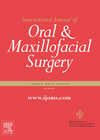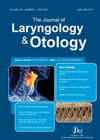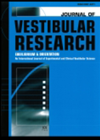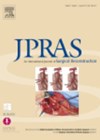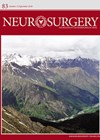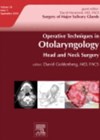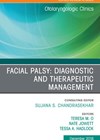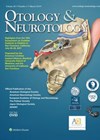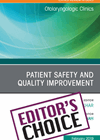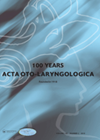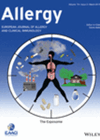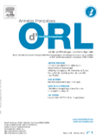
Journal Reviews archive for 2019
Soft tissue changes following maxillary osteotomy: comparison of three computer programmes
This small group of seven patients had a Le Fort I advancement maxillary osteotomy with vertical repositioning and alar base cinch sutures. They were assessed with cone beam CT’s three months preoperatively and one-year postoperatively. A clinical comparison between the...
Nasal disease and quality of life in athletes
Rhinitis is a nasal condition which is generally underappreciated in primary care and even less in athletes. In this study, the authors specify nasal symptoms constituting rhinitis as nasal blockage, sneezing bouts, rhinorrhoea and itching and compare their prevalence in...
Clinical features of BPPV in Meniere’s disease
It is an observation that BPPV appears to be commonly associated with Meniere’s disease (MD). This five-year study compared features and treatment outcomes between patients presenting with MD in conjunction with unilateral BPPV and a group of BPPV patients without...
A single blinded RCT comparing triamcinolone with 5-FU treatment for keloid scars
This single blinded RCT compared 43 patients with 50 symptomatic keloids that were randomised to two matched groups of 25 scars, receiving either 5-fluorouracil (5-FU) or current first line treatment, triamcinolone (TAC). The surgeon administering the injectable treatments was unblinded,...
Superior semicircular canal volumetry
This study uses superior semicircular canal dehiscence (SSCD) volumetry to measure the size of SSCD. The authors imported high-resolution computed tomographic images of the temporal bone into segmentation software. They measured the dehiscence lengths and volumes on coronal images (instead...
Avoiding the sweaty cheek
Frey’s syndrome is a common (10-40%) and important complication following parotid surgery. Gustatory sweating during oral stimulation can be embarrassing as it is accompanied by flushing and a sensation of heat. This is as a direct result of regenerated parasympathetic...
Surgical management of permanent facial paralysis
This article explores the management of flaccid facial palsy focusing on weakness less than one to two years’ duration. As a general rule, primary nerve repair produces the best outcome and should be performed where possible. For long-standing paralysis of...
The continued evolution of surgical techniques for bone anchored hearing devices
This paper is not the first, and is unlikely to be the last, to look at a variation on the current technique for inserting the percutaneous titanium bone-anchored component of a bone conduction hearing device. In less than a decade,...
Button batteries – how can we reduce harm to children?
This article explores the history of button batteries and how clinicians and industries alike could reduce the harm to children following ingestion. Following ingestion, if lodged, button batteries cause an alkaline reaction leading to necrosis of mucosa. Significant oesophageal injury...
Is there hope of hearing for postmeningitic patients deemed unsuitable for a cochlear implant?
Rehabilitation of patients with profound hearing loss deemed unsuitable for cochlear implants is challenging. An auditory brainstem implant (ABI) is a viable option for these patients. This paper evaluates auditory and speech perception outcome measures following ABI in 10 postmeningitic...
CRSwNP and smell – is it just the obstruction?
Anosmia and hyposmia are symptoms of CRS both with and without nasal polyps and can significantly affect quality of life. The nature of anosmia/hyposmia is thought to be both sensory-neural and conductive. These authors studied a mouse model in which...
Widen the ostium or keep it: that is the question
The original concept of wide endoscopic sphenoethmoidectomy for sinonasal polyposis has been a well-established principle since 1995. However, with the evolution of the understanding of sinonasal physiology, this might change. The authors present arguments based on the evolutionary and developmental...

